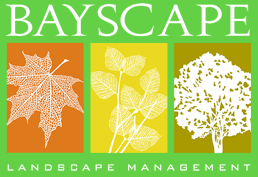Winter in the Bay Area is a unique time for gardeners. While much of the country’s gardens go dormant, the Bay Area’s mild winters keep gardens active. Our region offers a unique chance to prepare for a thriving, year-round landscape. With thoughtful planning, you can use the cooler months to create a sustainable, flourishing garden. Whether you prefer colorful winter blooms or cold-tolerant vegetables, this article will help you make the most of winter planting in the Bay Area.
Bay Area Garden Preparation for Winter Success
To achieve a year-round Bay Area garden, winter preparation is essential. Take this time to enrich your soil, plant hardy vegetables, and prepare for the spring season. This approach ensures your garden will thrive long after winter ends.
Helpful Facts
- Winter planting in the Bay Area keeps gardens active and prepares them for a flourishing year-round landscape.
- Soil enrichment and pruning during winter set the foundation for healthy spring growth.
- Bare root planting for fruit trees and roses is ideal in winter, promoting strong root development.
- Cold-tolerant vegetables like spinach and kale thrive in cooler months, providing fresh winter produce.
- Sustainable gardening with mulching and crop rotation helps conserve water and protect the garden through the rainy season.
Start by improving Bay Area soil preparation for winter. Add compost or well-rotted manure to boost soil health during the colder months. Remove any summer plants that have stopped producing. Consider planting cover crops like fava beans to protect and fertilize your soil during winter. These steps keep your garden soil rich and ready for the growing season.This will support microbial life and improve soil structure for spring planting. Next, focus on pruning tips for Bay Area gardens. Winter is the best time to prune dormant trees and shrubs, helping them grow stronger come spring. Pruning also reduces debris, protects plants from storm damage, and keeps your garden tidy.
Embrace Bare Root Planting for Winter
Bare root planting in the Bay Area is an excellent option during winter. Bare root plants are dug up and stored without soil, making them lightweight, affordable, and quick to establish when planted during the winter. These plants are dormant, which allows them to adjust to new soil conditions easily and establish strong roots before spring growth begins.
Ideal bare root choices for the Bay Area include roses, fruit trees, and various shrubs. Planting Bay Area fruit trees for winter—such as apples, peaches, and plums—will yield rewarding harvests while adding to the beauty of your landscape. Additionally, bare root vines like grapes or blackberries are a great way to fill out your garden and provide fruit-bearing plants that benefit from early winter planting.
Cold-Tolerant Vegetables: Winter’s Best Harvest
Winter is the perfect time to plant a variety of cold-tolerant vegetables in the Bay Area. Our region’s mild winter temperatures allow gardeners to grow a wide range of hardy crops, including leafy greens and root vegetables, which thrive in cooler climates. Vegetables like spinach, kale, and chard can be sown in the late fall and continue producing throughout the winter, giving you fresh, homegrown produce.
For those interested in expanding their winter crop selection, the best plants for Bay Area winter gardens also include root vegetables like carrots, turnips, and beets. These cold-tolerant crops can be planted in early winter and harvested in spring. Don’t forget about the brassica family—broccoli, cabbage, and cauliflower—which also thrive in cooler temperatures and add nutritious variety to your garden.
Adding Color with Winter Blooms and Drought-Tolerant Plants
Winter gardens don’t have to be dull. With careful planning, you can introduce plenty of color and texture to your winter flower garden in the Bay Area. Winter-blooming plants like hellebores, camellias, and witch hazel thrive in the cooler months, offering stunning flowers to brighten your landscape. These blooms provide visual interest while supporting local wildlife, such as bees and birds, even during the quieter months.
Sustainable Winter Gardening for the Bay Area
Sustainable winter gardening in the Bay Area isn’t just about planting the right crops; it also involves protecting your garden and planning for future seasons. To ensure long-term success, consider practicing crop rotation and mulching. Mulching helps retain moisture, insulate roots, and reduce the need for frequent watering, especially important during the rainy season.
For optimal results, getting professional help can make a big difference. Experts can guide you through rainy season planting in the Bay Area, helping you leverage natural rainfall while minimizing irrigation. This approach conserves water and ensures your garden transitions smoothly into spring and summer. A professional can also help you select the right plants and implement strategies like mulching and crop rotation, ensuring your garden thrives year-round.
How Can Bayscape Landscape Management Help?
Bayscape Landscape Management together with our wholly owned subsidiary Arbortek Tree Services is a local, family-owned and operated landscape management company with a twenty-five year heritage of reliability and performance. From small beginnings, our company has grown to become one of the leaders in the landscaping industry, entrusted with maintaining the Bay Area’s most beautiful commercial and residential landscapes. Our single objective is to transform your exterior into a picture-perfect space, as breathtaking as it is functional.
You may have been recommended to us by one of our many satisfied customers, or you may have searched online for landscaping services near me. However you found us, we’re happy to welcome you. Call us at (408) 288-2940 or contact us online.
Helpful Facts
- Winter planting in the Bay Area keeps gardens active and prepares them for a flourishing year-round landscape.
- Soil enrichment and pruning during winter set the foundation for healthy spring growth.
- Bare root planting for fruit trees and roses is ideal in winter, promoting strong root development.
- Cold-tolerant vegetables like spinach and kale thrive in cooler months, providing fresh winter produce.
- Sustainable gardening with mulching and crop rotation helps conserve water and protect the garden through the rainy season.
